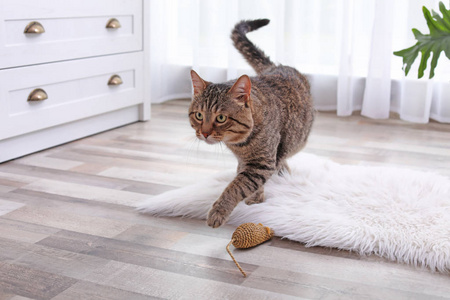Sometimes people who have pets may feel confused. Why do they still see fleas hopping on their pets even after the cats or dogs receive flea and tick treatment?
Firstly, you should understand that no flea and tick treatment product stops fleas from jumping onto pets.
Any fleas on your dog’s body will be dead within hours after the initial flea treatment application. However, there still may be adult fleas, eggs, or larvae in your dog’s bed, your carpet, or residing in the shrubs, tall grass, or fallen leaves in your backyard. If your pets go somewhere that’s scattered with fleas – such as gardens, parks, or even your homes if there’s an infestation going on – new fleas will keep jumping on the pet.
So, when your dog goes back to infested areas, they’ll once again be infected with fleas or their offspring. But don’t worry, these new arrival fleas will keep being killed as long as the pet is treated.
Most importantly, the fleas on a pet are just 5% of the problem, and 95% are in the living environment as flea eggs, larvae, and pupae. If you only treat your pets, you will miss out on a significant portion of your home’s flea population. Even though fleas have been removed from your pet, the flea problem may not be solved.
A lot of the fleas are not on your dogs or cats. They are in your carpets, bedding, furniture, and yard. Flea eggs can settle in your carpet or furniture. Larvae and pupae prefer dark spaces and might hunker down in the cracks in the floor, in your carpet, or the cracks and crannies of your couch. Adult fleas often hang out in your pet’s favorite places, such as beds, warm sunny spaces

Seeing fleas after pets receive treatment does not necessarily mean that it’s not working. We recommend treating all other pets in your home and your home itself. To help clean fleas in your home, please follow this three-step program.
1. Treating Your Pets
Treat once a month with an effective flea and tick treatment product to kill fleas and ticks on your pet. These flea treatment products kill fleas and ticks before they have a chance to bite your dog or cat. Keep in mind that when you’re at war with fleas, all animals in your home need to be treated. Even indoor-only cats can contract fleas from your dog and may continue to host fleas and pass them back to your dog.
2. Treating Your Home
You’ll need a multi-pronged approach to start eradicating fleas. To kill the adult and juvenile fleas hiding in pet bedding and carpets, treat the premises with flea and tick household spray or powder. Use a home spray anywhere your dog frequents, including carpets, couches, and beds. Flea eggs can lie dormant in carpeting for months. Sprinkle salt or diatomaceous earth in carpeting to dry them out, then vacuum to draw out any remaining pests.
3. Treating Your Yard
If your dog has fleas, your backyard most likely does too. Treating your yard for fleas is essential to ending your flea problem. Fleas love moist, dark areas. They lurk in tall grass, shrubs, leaves, and wood piles. Grass should be short so as to not attract fleas, but it should be no shorter than 2 inches, as too-short grass becomes uninhabitable to fleas’ natural enemies, spiders, and ants. Spray the perimeter of your yard with flea spray and treat any dark, moist places like crawl spaces, garages, and sheds.
Always read the directions and safety guidelines on the label before using any flea product and use only as directed. Please make sure your pet’s flea treatment is safe for all your home species because flea treatments for dogs may be toxic to cats and other small animals.

Copyright © 2025 LIAM HUNTER TRADE LLC